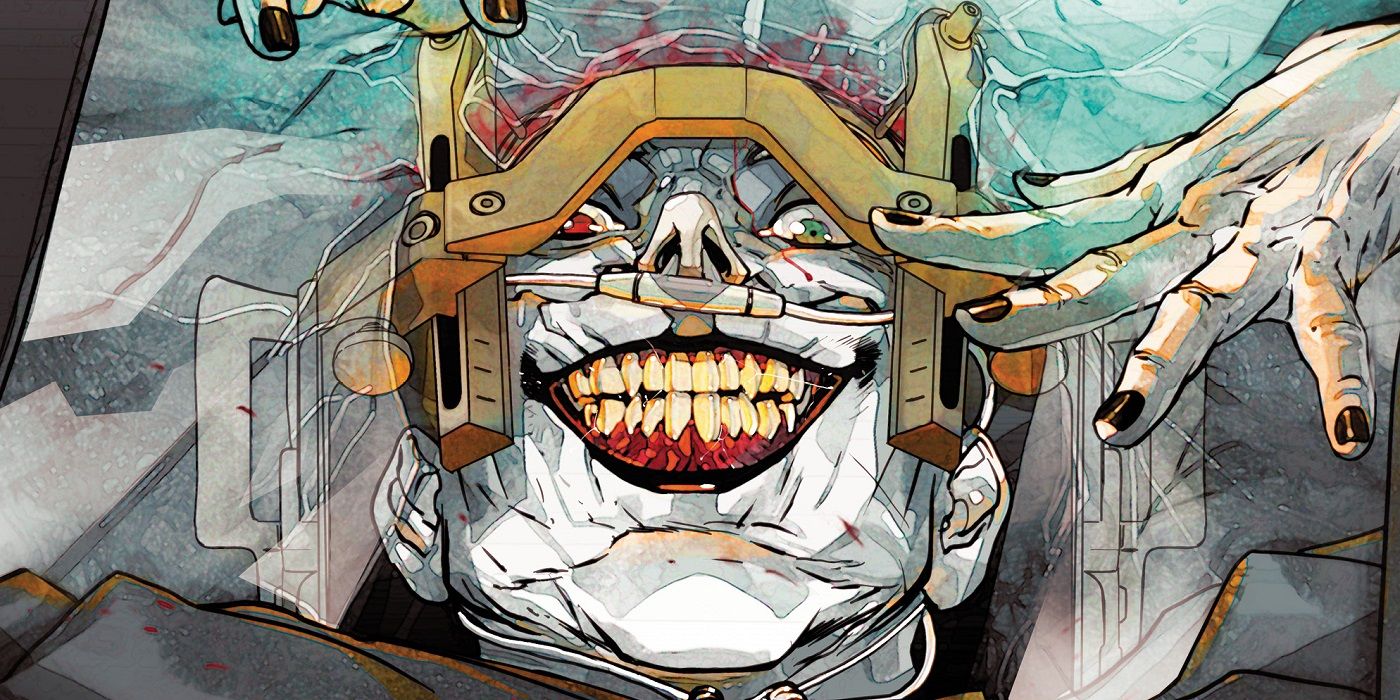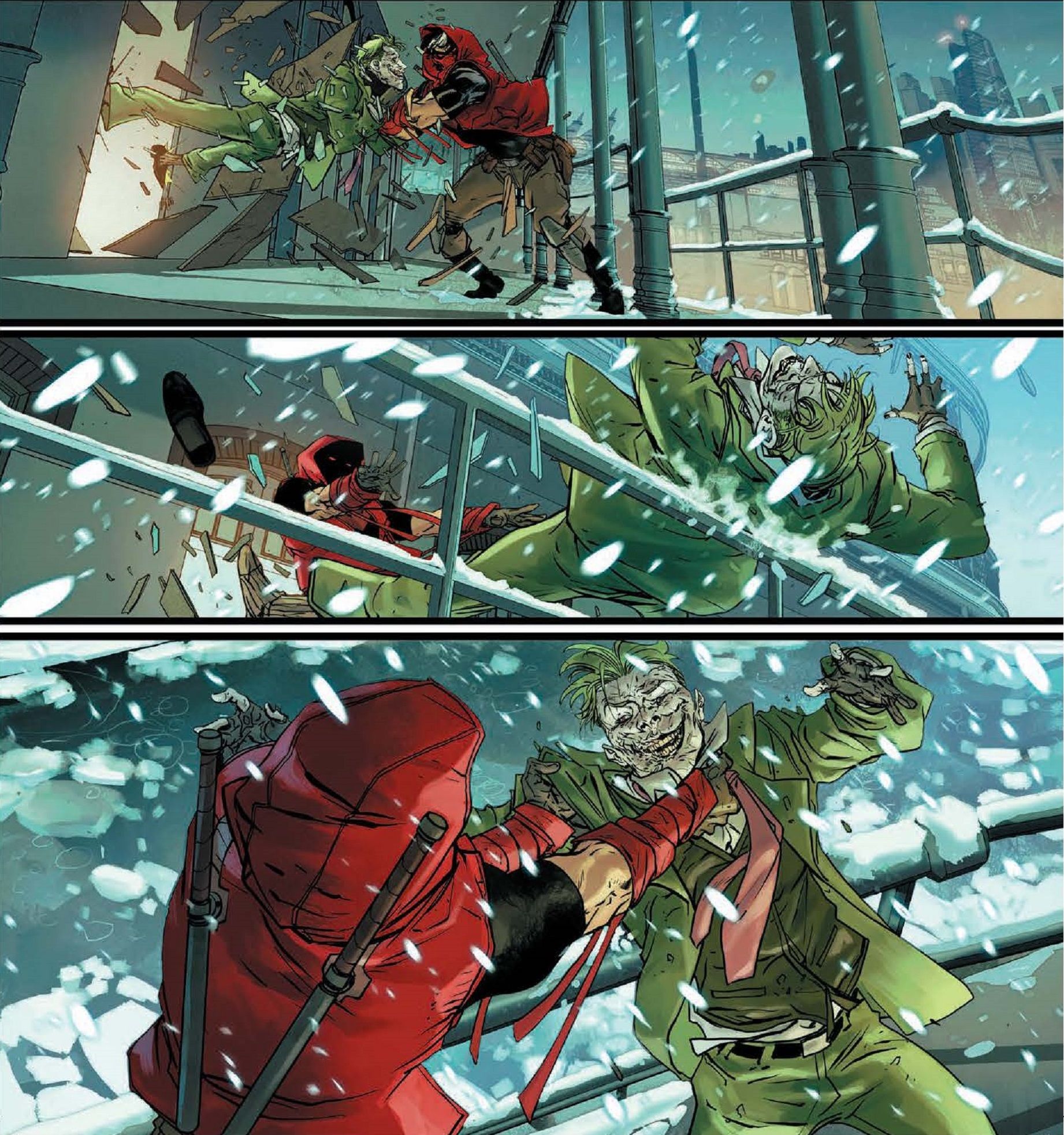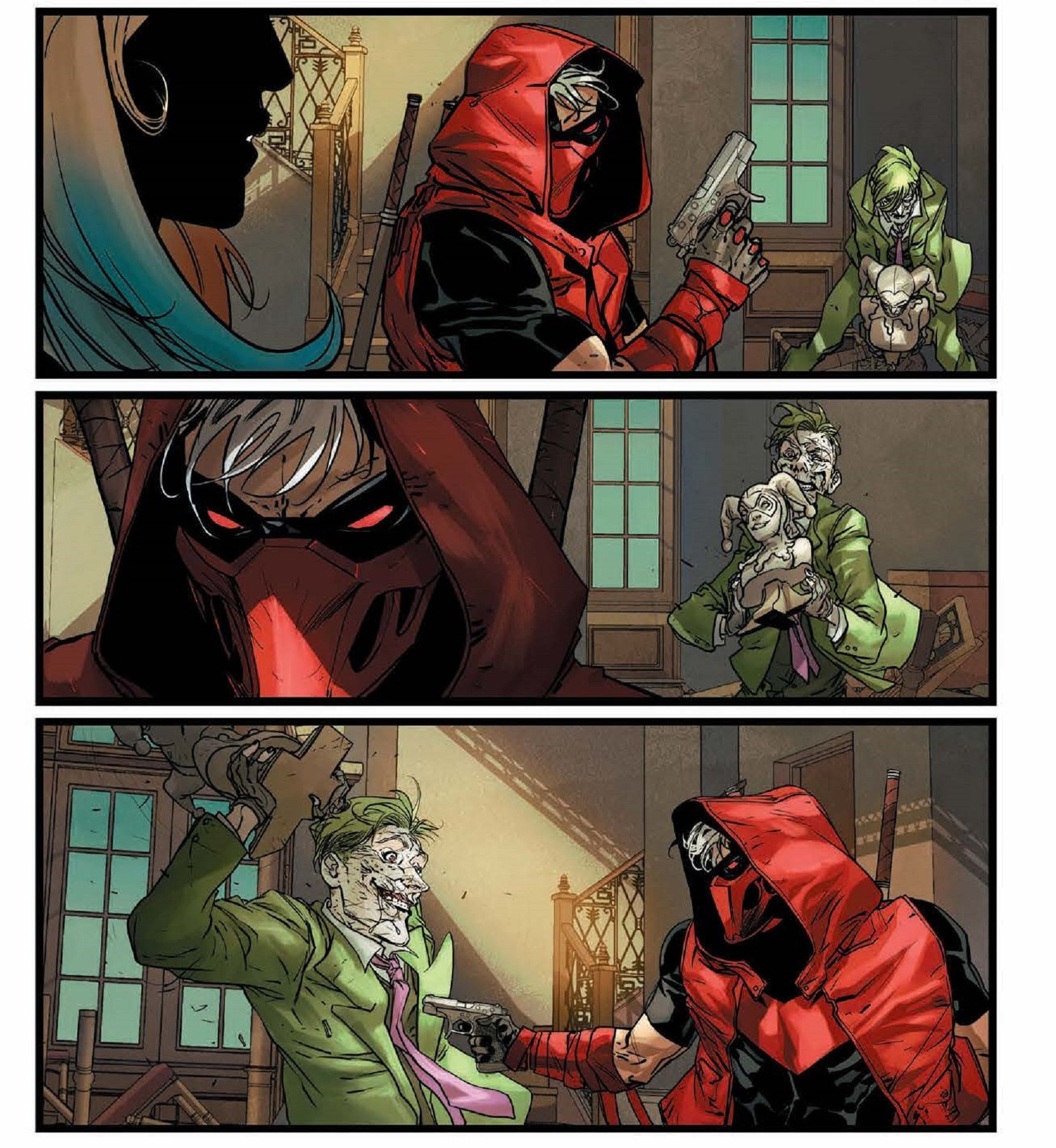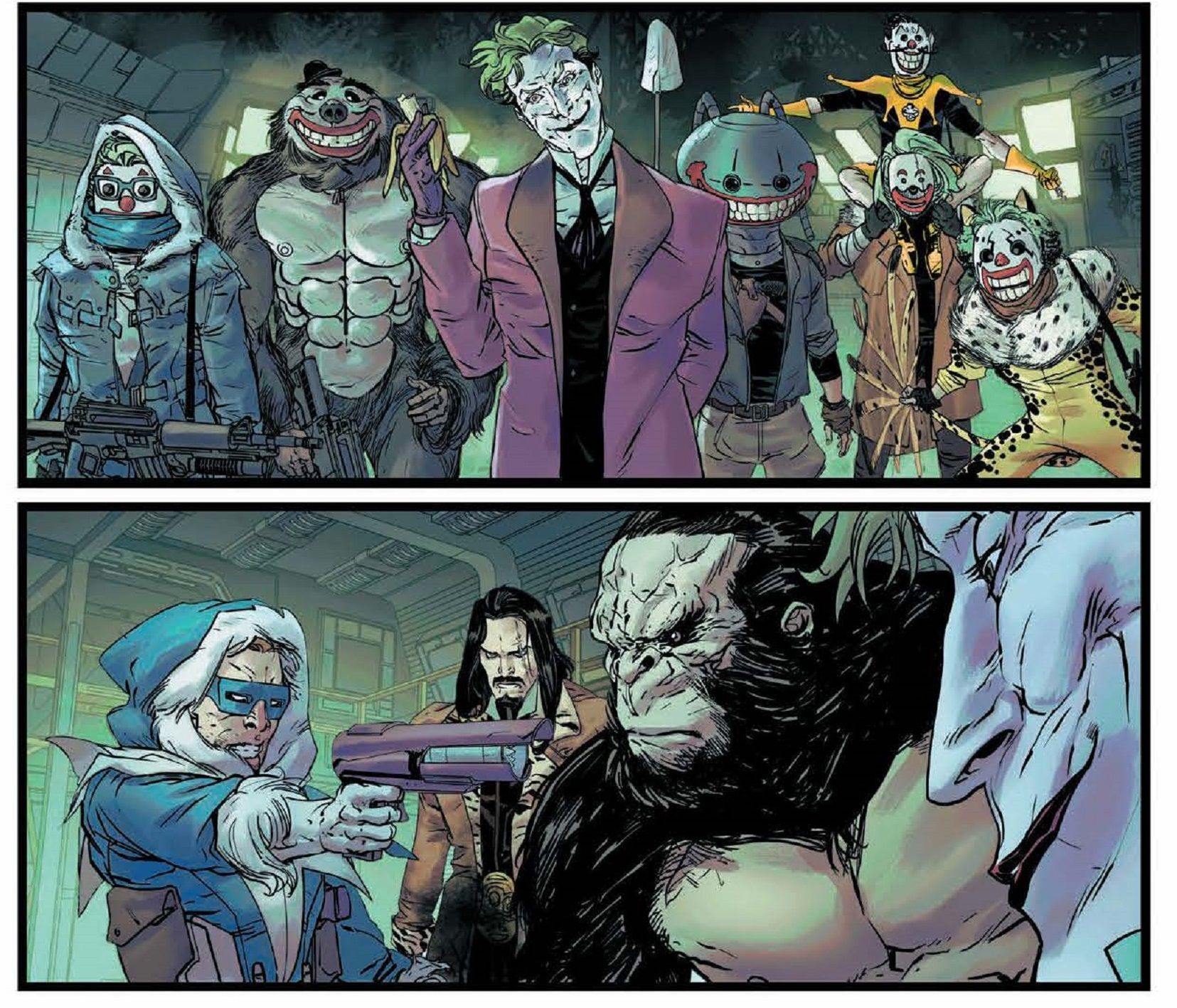The Clown Prince of Crime is no passenger or supporting character in a Bat book right now -- he has the stage all to himself. After the highly successful and critically lauded Joker comic book series, the capers continue in The Joker: The Man Who Stopped Laughing from writer Matthew Rosenberg and artist Carmine Di Giandomenico. The book also features a backup story penned by Rosenberg and drawn by Francesco Francavilla.
In an exclusive interview with CBR, Rosenberg discussed the history behind the story and how it was influenced by James Tynion IV's run. The writer revealed the biggest inspirations behind this version of the character and what this book aims to achieve in the grander scheme of the DC Universe. In addition, Rosenberg detailed an important connection in the book that many readers haven't picked up on yet and could prove to be incredibly important later on in the series.
CBR: Thanks for your time, Matthew. First and foremost, when you first start developing this idea for your Joker story, were there several pivots and changes in direction you had to take because of what James Tynion IV and the team were doing on their Joker book at the time?
Matthew Rosenberg: No. I worked a bunch with James and them on that Joker book -- I did some fill-in issues for them. So, I was really a huge fan of what they were doing. When it came time for this book to start, my first instinct was to really just pick up and run with where they left off and really continue their story. After a long talk with Ben Abernathy, who's the editor on the book, he was like, "This is a fun chance to change the direction while still honoring what came before. You don't have to continue the path they were on."
With that in mind, we sort of retooled what I had, just because it just seemed like there was a wide open road in front of us, and it seemed like a good time to just try something completely different. I definitely wanted to keep a lot of the tone, the feeling, and obviously the continuity that James and all of them had set up on the book because I love it, and I'm a huge fan. I like to think that what we ended up doing, it's very different, but it's built on the foundation of what they did, for sure.
Ironically, you worked with Carmine Di Giandomenico on a Future State: Grifter story a while back, and now you're on Joker together while you also do WildC.A.T.S. What's your relationship like with Carmine, and what's your collaboration process like to bring the story to life?
Oh, man, Carmine is the best. I didn't know him before we did the Grifter story. Personally, I knew his work, and I was a fan. Then watching him on that Grifter book bring stuff to life, and he just goes so hard on things and really like blows out things in the coolest ways... It got me really excited. I was hoping to work with him again. I told Ben, "Any time Carmine is available, I would love to work with him." His characters look amazing, and he elevates the action stuff. It took all this time. He'd gone off and done a book. He was doing a book with Chip Zdarsky. So I was like, "Oh, well, yeah, that'd be great." It's a great book. Then at a certain point, we were developing The Joker, and Ben was like, "You know, the time is gonna line up that Carmine will be available." I immediately was like, "Yes, yes, it needs to be Carmine."
Our relationship is pretty simple. I tried to give him cool stuff to draw and get out of his way. Like, that's just my approach. He's great at action. He's great at character stuff and just gives Gotham such a good feel. So, I'm trying to really lean into all of those things and have some crazy, insane action pieces for him to do and really let Gotham be a character in the way that I feel like it should in a Bat book. Mostly, it's just me saying, "This is how I think this would be, but you're gonna do it better than I can imagine. So just go." That's pretty much our relationship at this point.
Without getting into too many spoilers, the story does feature a multiple Joker element. It's kind of interesting because DC has explored the whole three Jokers thing as well, while there are theories about the Joker being a time traveler. Why do you think this is the one element that fascinates creatives so much in relation to the Joker?
Yeah, I mean, I think the Joker is such a fascinating character because he's so unique and iconic -- and he's the most famous villain in comics. He's also such a mystery -- more than almost any other mainstream character in comics. He is in comics all the time. He's in movies and TV, and we know so little about him. I think what that does is really cause writers, comic creators, and fans to really try and explore what he is, who he is, and what he means.
When you do that, when you look at the character and his history, there's all these different interpretations and iterations, and it starts to become this real mystery in the real world of what this character is and what he can be. It's a really sort of fascinating thing that I've never kind of come across in other comics. You'll get other people interpreting characters and redefining them and changing them, but the Joker doesn't have a solid foundation that we know. He doesn't have anything we can go back to and [identify as] the core Joker. He is this chaotic entity that is always sort of changing and morphing. There's elements you recognize, and there's things that change. I think from that, there's sort of a logical extrapolation of looking at all these different iterations and versions of the Joker and sort of wondering what if and who is he? What does it mean? What is my Joker when I'm telling a story? That's really where it comes from for me.
Obviously, what Geoff Johns and them did on the Three Jokers is amazing, and there's a lot of people who've played with it. I think what we're doing is looking at everyone who's touched the Joker and been like, "Who is he and what does he mean?" That's what we're trying to explore with our story -- what is the Joker at his core? Can he lose that, and can someone else take that? Is that something that's immutable, and is that something that only he can have and control? So that's really what we're trying to explore is just the definition of the Joker himself.
As you mentioned, there's so much history with the Joker and stories to take inspiration from. Were there any specific ones or interpretations of the character that helped shape your story, since trying to combine 80 years can be pretty tough?
Yeah. My goal was sort of to synthesize a lot of my favorites. You see it in the backups we do with Francesco Francavilla. I have real love for the Golden Age Joker, who's much more of a prankster and much more absurd. So, we have these backups that sort of honor that, and then he becomes -- I think of The Killing Joke as a pivotal moment -- a much scarier, nastier entity. Obviously, he was killing people and doing horrible things. I read The Killing Joke as a child and was horrified by it, as you should be. He's really a terrifying presence.
Those are the key touchstones for me: the sort of prankster Golden Age Joker and Alan Moore and Brian Bolland's Killing Joke Joker are the beacons that we're trying to hit -- how could he be funny and fun and also horrifying? From there, it's just mixing in a lot of [others]. I love Scott Snyder's take on the Joker. I think he always did a Joker that was a great balance of hard to pin down and terrifying but fluid, in a way. There's so many [others]. You're always coming across Joker stories that feel additive, and you want to take elements from [them]. That's the fun of the character. He is a fluid-enough character that I'm always trying to absorb new bits and new pieces to build a collage of the character.
You touched upon the Golden Age element here. Was that completely intentional to have a more serious main story and something a little bit more fun as the backup?
I wanted to do justice and honor that Golden Age because I was reading a lot of it going into this and [thinking] we don't get comics like this anymore. We don't get just absurd, and this absurdity is just not in books enough. Obviously, there are comics that sort of touch on that, but the level of absurdity in [Golden Age] books is really astounding.
Also, without spoiling anything, the backups actually will start to play a more pivotal role in the book. I've had a bunch of people say, "Oh, well, they're not in continuity." That's not entirely true. There's a bigger thing at play with them. So, as we go forward, you'll see that the absurdity and the sort of fun is a palate cleanser for the book. Also, we're talking about something that is going to impact the other half of the book in a big way. There's a bigger puzzle that I don't think people have picked up on yet, but I'm excited for that to unfold for the reader.
In a previous interview, you mentioned before that the story of yours is quite ambitious and you'll go as long as DC will let you. That said, is there a grand plan here that will change the way fans see the Joker forever? Is that the end goal?
There's a grand plan; there's a place we're going. I would like to take a long time to get there and [visit] a lot of fun places, but we have a story we are telling, and it's big and ambitious like you said. I sort of take issue with the idea of changing the way readers approach the Joker. I don't ever want to do that. That's not who I am as a writer. When I come to these things, I'm a real lover of working in the greater tapestry of the universe. It's not patchwork; it's adding stitches to a design that's already there.
So, I'm hoping that in a year or two, when my story is out there, and there's more of it, it causes people to think differently, but I'm not trying to reinvent the Joker. I'm not trying to radically alter him. I'm trying to do something that honors what came before but takes it in a new direction, if that makes sense. I hope that the people who come after me and tell Joker stories do the same thing -- that they honor what we're doing here but also reinvent in a certain way that is built on everything that came before it.
We all know about the synergy between the Joker and Batman and how they are always brought together. However, I've noticed in The Joker: The Man Who Stopped Laughing that Batman is pretty absent here. In James' run as well, the focus was more on the Joker, too. We've seen the Red Hood play a role in the second issue as well, but the question is, will the inevitable happen where Joker and Batman will meet in the story and collide?
Batman is the inevitable force of the entire DC Universe. He is inevitable in everything. With that said, we're doing everything in our power to tell a story that prolongs that. For now, Red Hood is our antagonist. Red Hood is going to be the man hunting the Joker. First and foremost, there are going to be other characters coming in and popping in and out, but in a traditional Batman vs. Joker story, Red Hood is taking that role because we're trying to say something interesting about the Red Hood, too -- again, [to] go back to that idea of adding some things to the Red Hood lore and sort of alter the way people see him a little bit.
Yeah, I mean, I can't say that Batman's not gonna show up, but it's not a Batman vs. Joker comic. It's a Joker comic, and he's the star of the show. If Batman shows up, he's going to be a guest appearance -- and it'll matter. We're not going to stick him in to put him on the cover and sell some books. When he shows up, it'll matter. It's important to the plot -- that's all I can say about Batman for now.
DC's The Joker: The Man Who Stopped Laughing #3 is on sale on Tuesday, Dec. 6.




